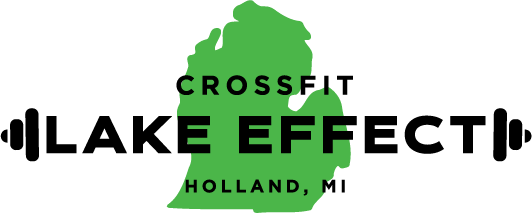Belt Squat Overcoming Isometric
As strength and conditioning coaches , our primary objective is twofold: to promote and program for injury prevention and sports performance readiness; and to develop strength, power, and speed qualities specific to the athletes’ sport. The problem we all face, however, is the fact that these two jobs can oftentimes interfere with one another.
It is common knowledge that when limits are pushed in the weight room, Delayed Onset Muscle Soreness and fatigue are likely to appear, which may acutely affect performance in an athlete’s sports practice or competition. Furthermore, the best exercises for sports form development, generally speaking, can carry the greatest risk of soreness, long-term fatigue, and injury (bench, squat, and deadlift).
Therefore, in an effort to accomplish the goals of both athlete preparedness and strength/power/speed development, the Belt Squat Overcoming Isometric can be utilized effectively.Belt Squat Overcoming Isometric
Below are the reasons why I have found this to be a very effective exercise in any training program:
- Higher Motor Unit Recruitment/Peak Neural Drive : In a study, it was found that during maximal overcoming isometric muscle action, there are higher levels of muscle activation (95.2 percent) than during maximal eccentric (88.3 percent) and maximal concentric (89.7 percent) muscle actions.1
- No Load On Back: Puts athletes in a safe position to produce maximal force without involving the spine.
- Adjustable Range of Motion: Depth of squat can be adjusted based on time of year and goal of training cycle (I have my athletes perform a full depth squat in the offseason, then adjust the depth to a quarter squat during pre-season and competition seasons because it is more sport-specific).
- Cueing Proper Hip Extension Patterns: Simplifies teaching athletes to drive through the glutes since there is no movement during the exercise.
- Creates a Competitive Environment: Athletes are producing maximum force to lift the rack.
- Decreased Co-Activation: In a study, it was found that an eight-week training program consisting of overcoming isometrics decreased co-activation of the antagonist muscles by 20 percent.2 Decreased antagonist co-activation provides less opposing force to the contracting agonist muscles.
- Minimal Delayed Onset Muscle Soreness: Due to the absence of movement/eccentric muscle action in the exercise minimal soreness is experienced.
- Zero Chance Of Failure: Quite often in the weight room injury is at the highest risk when failed lifts take place. In addition, when training to failure takes place cortisol levels elevates, which is not ideal for athletic performance.3
- Fatigue Management: Managing fatigue is much easier with overcoming isometrics because they are performed for time, so you can set specific time limitations (seconds) per set limiting deviation amongst your athletes.
- Excellent Option for Athletes with Back Issues: Allows athletes with injured backs to perform exercises maximally while the rest of the team is performing deadlifts or back squats.
Implementing the Belt Squat Overcoming Isometric
I implemented variations of the Belt Squat Overcoming Isometric multiple times throughout a typical training year for two to three weeks at a time:
- Myelination Phase: The objective of this phase is to improve motor unit recruitment of the muscle by increasing the rate at which electrical signals (neurons) travel to the muscle via the nervous system. Overcoming Isometrics fit perfectly in this phase because they produce the highest level of motor unit recruitment.
- Isometric (Triphasic) Phase: During an isometric phase, this can be implemented instead of the typical yielding isometric back/front squat for any of the reasons listed above.
- Power Phase: Allows for maximum force production and increased rate of force development, which will translate to a more dominant athlete in his/her sport.
- Any Phase (Post-Activation Potentiation): Increases neural drive and wakes up the nervous system when used at the beginning of any lift, resulting in increased explosiveness and dynamic strength following its use for the remainder of the lift.
When to Not Program the Belt Squat Overcoming Isometric
Although this exercise has many benefits to an athlete during a training year at many different points, there are times when its implementation is not ideal if the goals of a phase/session are:
- Aerobic Phase: Due to overcoming isometric work to rest ratios, there will be little adaptation in regards to the oxidative system (mitochondria and capillary density).
- Hypertrophy/Connective Tissue Adaptation Phase: Due to the short time spent under tension when performing overcoming isometric, minimal improvements in muscle cross-sectional area will be seen. Also since there is no eccentric phase in the exercise, there will be minimal adaptation in connective tissue strength (tendons and ligaments) taking place.
- Athletes Under Extreme Fatigue: If athletes are under high levels of fatigue, overcoming isometrics is not a smart decision due to how neurologically taxing they are because they demand maximum levels of force production every set.
- Athletes With Low Training Age: It serves very little purpose to have athletes with low training age to perform overcoming isometrics because most gains they have seen early on are neurological already. Also, they must build a foundation of proper movement patterns, increase muscle cross-sectional area, and improve connective tissue strength first to reap the benefits of overcoming isometrics.
References
- Activation Of Human Quadriceps Femoris During Isometric, Concentric, and Eccentric Contractions. Nicolas Babault-Michel Pousson-Yves Ballay-Jacques Hoecke – Journal of Applied Physiology - 2001.
- Adaptations in Coactivation After Isometric Resistance Training. B. Carolan-E. Cafarelli - Journal Of Applied Physiology – 1992.
- Differential Effects Of Strength Training Leading To Failure Versus Not To Failure on Hormonal Responses, Strength, and Muscle Power Gains. I. Shrier – Yearbook Of Sports Medicine - 2007.





